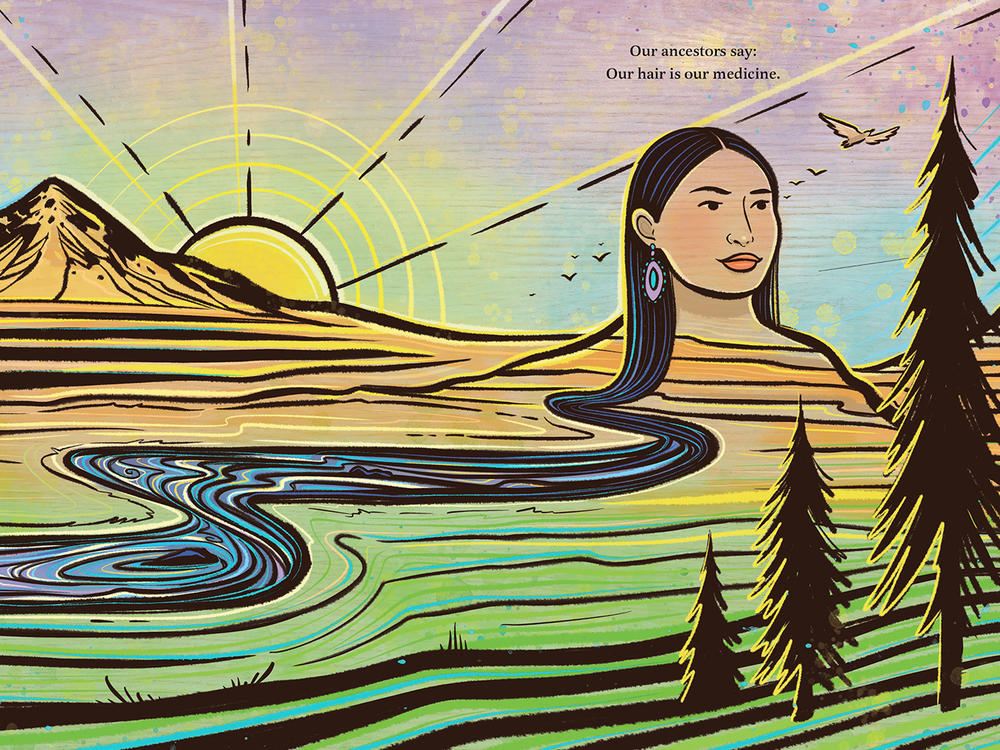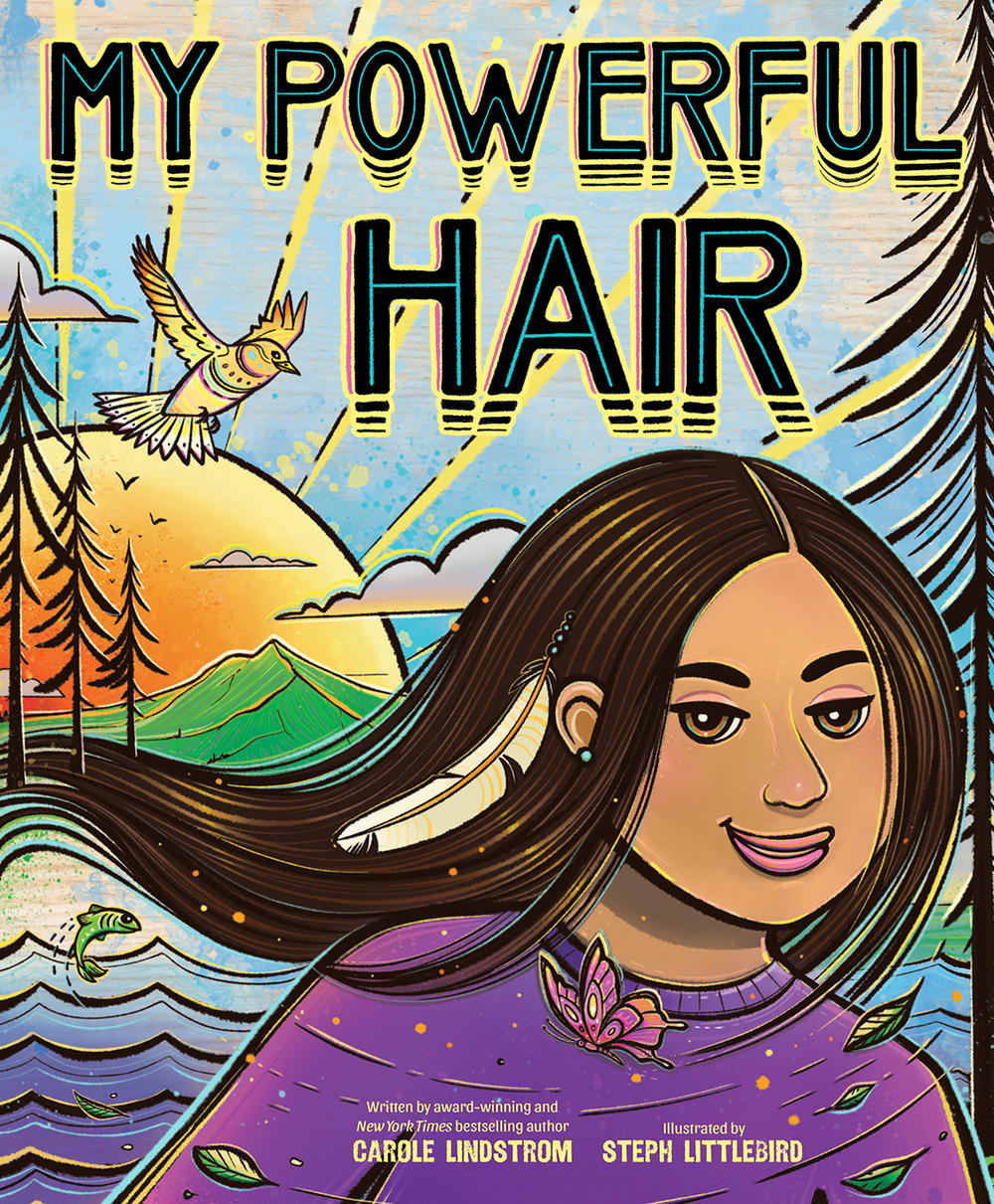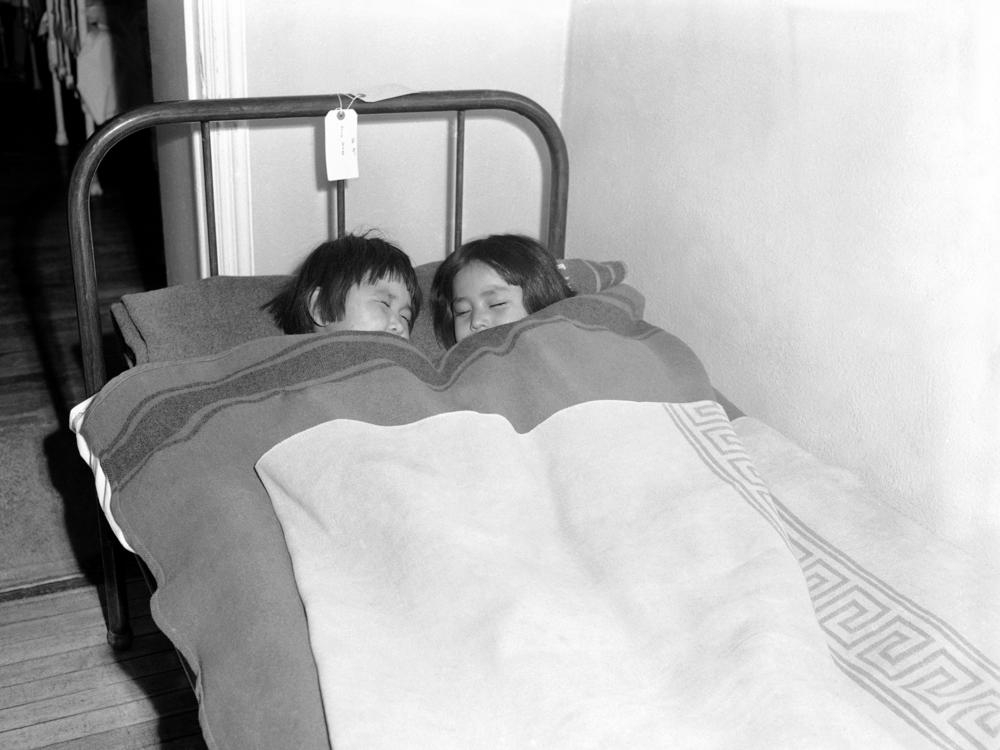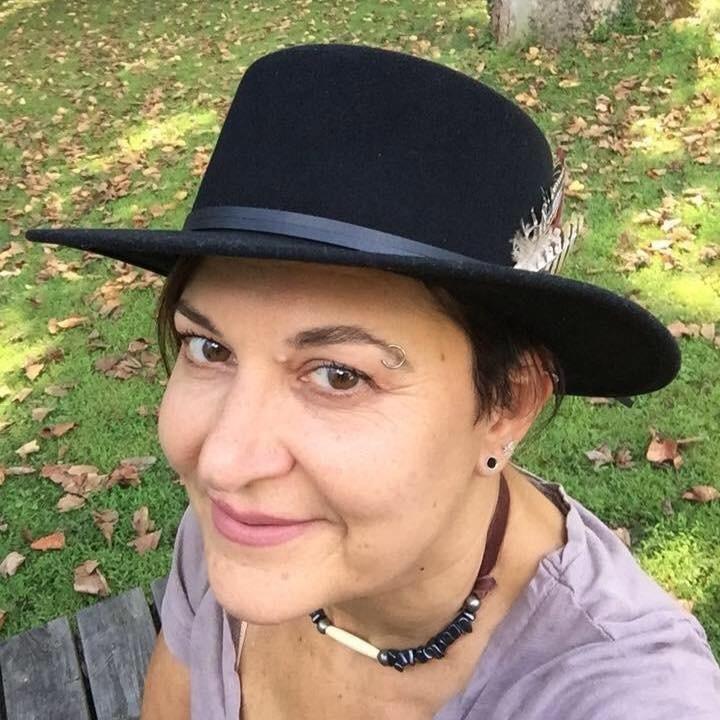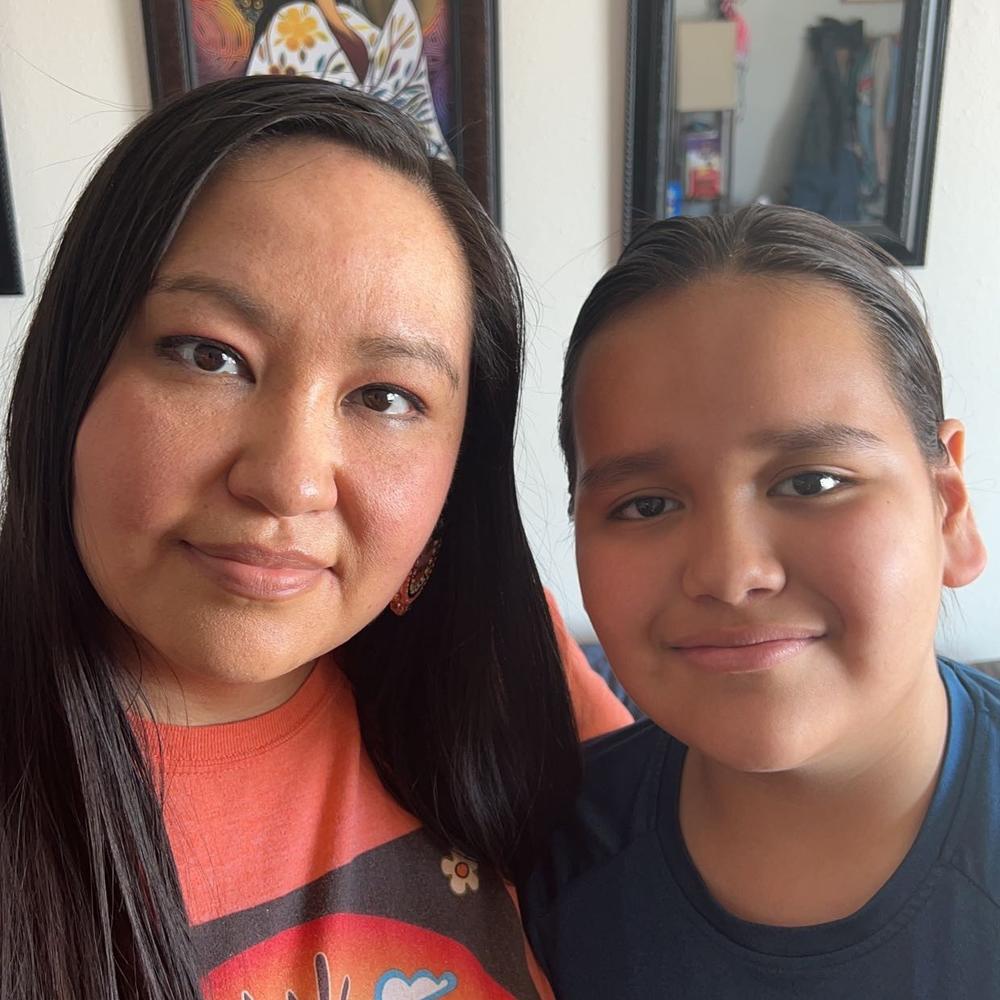Section Branding
Header Content
'Like a living scrapbook': 'My Powerful Hair' is a celebration of Native culture
Primary Content
My Powerful Hair is a new picture book that turns a painful truth about racism into a celebration of Native culture.
When Carole Lindstrom was a little girl growing up in Bellevue, Nebraska, she really wanted long hair. She would put the blanket she had as a baby on her head and, "pretend I had long hair, you know, swing it around," she laughs.
She couldn't understand why her mother wouldn't let her. "Every time it got a little bit long, she said, 'We have to cut it. It's too wild,'" Lindstrom remembers.
She says her mother didn't seem to have a good explanation. One clue was a black and white photograph that sat on top of the TV set — a picture of her grandmother and two great aunts. "They were wearing these white smocks and their hair was just really chopped short and they had bangs. They just didn't look right," says Lindstrom. "And I remember asking my mom about that picture...and my mom didn't really know much about it other than to say, 'Well, that was when grandma and your great aunts were sent to boarding school. Indian boarding school.'"
A brutal effort to erase Native culture
At Indian boarding schools, children were forbidden to speak their Native languages and forced to cut their hair, among other indignities.
As an adult, Lindstrom set out to find out more about her culture and learned the truth about hair. "The hair is such a big part of who we are and our identity," she says, "It's like a living scrapbook."
In My Powerful Hair, a little girl relates the events of her life with the length of her hair.
"When my baby brother was born, my hair touched my shoulders. The gift of welcoming him into the world is woven into my hair," Lindstrom writes.
Lindstrom is Anishinaabe/Métis and an enrolled citizen of of the Turtle Mountain Band of Ojibwe.
Ten year old Talon Jerome, who lives on the Turtle Mountain Reservation, identifies with her new book. "Our hair is the source of our strength and power and memories," he says.
Talon and his mother, Cherona Jerome, are members of the Turtle Mountain Band of Ojibwe. Cherona teaches at Talon's school. She says books like My Powerful Hair are important for her students to read.
"It's a beautifully written story and very relatable to our own experiences," Jerome says. "My mother was a boarding school survivor and I do recall pictures of her also with very, very short hair. Her and some of my aunts who went to boarding school also."
In the story, the young girl cuts her hair when her grandfather (Nimishoomis) dies. "I sent it into the spirit world with him so that he could have my energies," she says.
"[This] kind of brought back some memories of my grandmother's passing," says Jerome. "I also cut my hair...and it went with her in the grave. It's just a sign of mourning for us."
Bringing more diverse books to readers
Jerome also relates to Lindstrom's desire to teach children Native traditions. She says the hard truth is that her mother and grandparents' were taught to be, "ashamed of their culture. They they weren't allowed to be proud of it." She continues, "We're the generation that's teaching them our culture again."
Lindstrom says there was a time when publishers wouldn't even look at her stories about Indigenous culture. "So I was writing tooth fairy stories and all those things," she jokes. Then, she says, We Need Diverse Books came about. The campaign, launched in 2014, pushed for greater diversity in publishing. "And when that happened, the world kind of suddenly went 'click,'" she says.
A publisher snapped up her book We Are Water Protectors. It won a Caldecott Medal and became a bestseller.
Lindstrom wishes the world had "clicked" sooner. She says she almost never saw children who looked like her in the books she read as a little girl. Those she did see, were depicted as savages. She says My Powerful Hair is her "gift" to children who look like her.
"I just want them...to see themselves in a positive way when they pick up a book. I didn't have that. It was always blonde hair, real light colored skin, not who I was when I was younger," she says, "I just didn't know where my people were."
Lindstrom says her mother died in 2015 without ever learning the power of her hair.
This piece was edited for radio and digital by Meghan Collins Sullivan. It was produced for air by Isabella Gomez Sarmiento.
Copyright 2023 NPR. To see more, visit https://www.npr.org.
